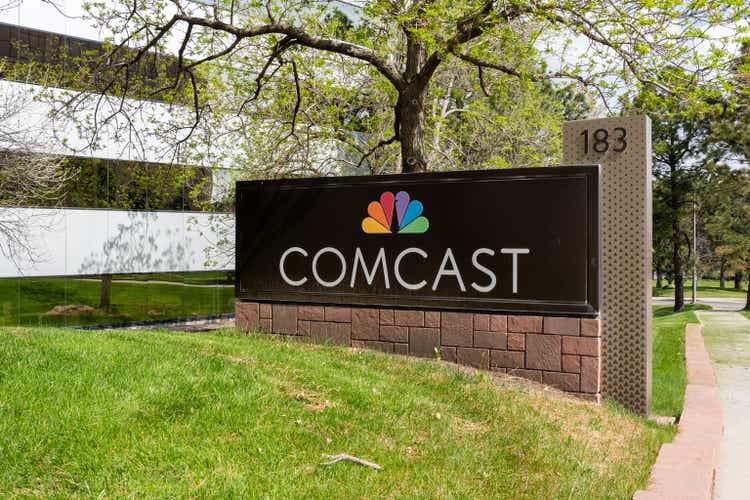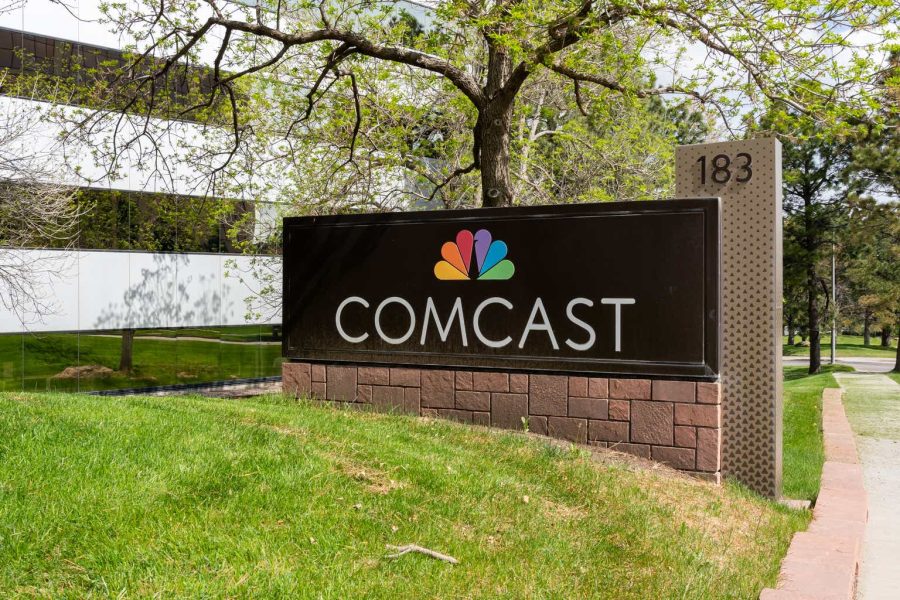Summary:
- Comcast, with a market cap of over $160 billion, faces significant portfolio threats, making it a poor investment despite a nearly 3% dividend yield.
- Financial results and segment performance indicate underlying issues affecting CMCSA’s overall stability and future growth prospects.
- Free cash flow analysis reveals potential vulnerabilities that could impact long-term financial health.
- Risks associated with Comcast’s business model and market environment underscore the thesis that the company’s stock is not a favorable investment.
JHVEPhoto
Comcast (NASDAQ:CMCSA) is one of the largest telecommunication companies in the world, with a market capitalization of more than $160 billion. The company has a relatively low valuation and an almost 3% dividend yield, however, as we’ll see throughout this article, continued threats to its portfolio make it a poor investment.
Comcast Financial Results
The company’s financial results show some strength in some segments but overall weakness.
The company grew revenue 6.5% but adjusted EBITDA declined by 2.3%. The company did manage to grow adjusted EPS by 3.3%, only slightly above inflation. The company’s overall FCF was $3.4 billion, almost $14 billion annualized. That’s a ~9% FCF yield, which is quite respectable in the current market.
However, with declining adjusted EBITDA and barely increasing EPS, it’s not particularly surprising.
Comcast Segment Performance
From a segment performance standpoint, the company is seeing a lot of variance by platform.
The company’s connectivity platform saw a 0.4% decline in revenue but a 0.7% increase in EBITDA. The company saw ARPU for residential broadband users going up 3.6%, but the company’s revenue decreased by 1%. The company’s margins and businesses are strong here, but as we’ll discuss before, it’s facing strong competition.
From content & experiences, the company saw $2 billion in revenue growth. The vast majority of this came from the media, and it came from the company’s performance with the Olympics. Without the Olympics, the company would have only seen a $0.1 billion revenue growth. Subtracting Peacock and the Olympics, the company’s revenue here went down.
That shows that the company’s growth is effectively nothing, and a short-term boost won’t change dynamics. More importantly, there was an adj. EBITDA boost from the Olympics that is unlikely to continue. That could hurt the company’s ability to continue earning its current financials.
Comcast FCF
The company has generated modest FCF, but it has minimal ability to grow it.
The company has a massive debt load, almost $90 billion. The company earned $3.4 billion in FCF as we discussed above. The company has continued paying a growing dividend, but it’s almost 3%. The company has also used a massive amount of cash for share buybacks, and total shareholder returns for the company are 9%.
However, as we discussed the company got a boost from the Olympics that we don’t expect to exist for the long term.
Comcast Risks
The company has a number of risks to its core business.
Specifically, competing companies like AT&T are spending $10s of billions of capital on building up their fiber business. The company added 1 million fiber subscribers YoY and several million in new locations growing. Fiber is a much better experience for competitors than broadband and as someone who’s used both AT&T fiber with symmetrical upload is better than Xfinity fiber.
Verizon is building out a similar network with its planned acquisition of Frontier Communications. This competition will present more of a threat to the company and future shareholder returns.
Thesis Risk
The largest risk to our thesis is that Comcast has a relatively low valuation and continues to generate a massive amount of cash. The company can use that cash to drive substantial shareholder returns to justify its valuation. That could make the company a much better investment over the long run.
Conclusion
Comcast is a major U.S. company with a market capitalization of more than $160 billion. The company trades at a P/E of ~11 with a 9% FCF yield; however, the company managed to receive a substantial boost from the Olympics. We don’t expect that to be able to continue going for the long term.
At the same time, the company is facing substantial threats from fiber. AT&T and Verizon are both building up massive fiber businesses. These fiber businesses could place a substantial threat to Comcast’s core business. With massive debt the company doesn’t have a lot of room to compete, making it a poor long-term investment.
Analyst’s Disclosure: I/we have no stock, option or similar derivative position in any of the companies mentioned, and no plans to initiate any such positions within the next 72 hours. I wrote this article myself, and it expresses my own opinions. I am not receiving compensation for it (other than from Seeking Alpha). I have no business relationship with any company whose stock is mentioned in this article.
Seeking Alpha’s Disclosure: Past performance is no guarantee of future results. No recommendation or advice is being given as to whether any investment is suitable for a particular investor. Any views or opinions expressed above may not reflect those of Seeking Alpha as a whole. Seeking Alpha is not a licensed securities dealer, broker or US investment adviser or investment bank. Our analysts are third party authors that include both professional investors and individual investors who may not be licensed or certified by any institute or regulatory body.
You Only Get 1 Chance To Retire, Join The #1 Retirement Service
The Retirement Forum provides actionable ideals, a high-yield safe retirement portfolio, and macroeconomic outlooks, all to help you maximize your capital and your income. We search the entire market to help you maximize returns.
Recommendations from a top 0.2% TipRanks author!
Retirement is complicated and you only get once chance to do it right. Don’t miss out because you didn’t know what was out there.

We provide:
- Model portfolios to generate high retirement cash flow.
- Deep-dive actionable research.
- Recommendation spreadsheets and option strategies.





